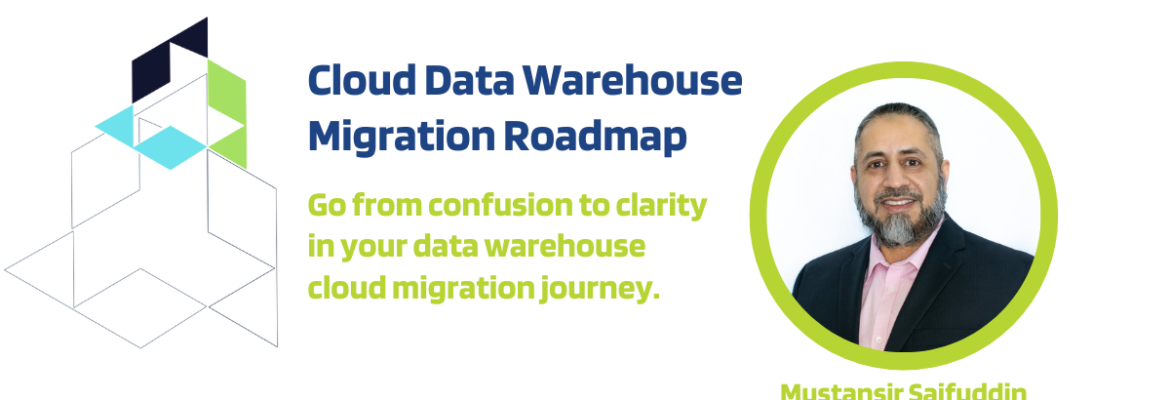By Mariyah Saifuddin
 Our latest series of podcasts with Matt Florian of Comerit focuses on cloud-based data warehouses. In our previous blog post we talked about the the urgency of moving to cloud-based data warehouses.
Our latest series of podcasts with Matt Florian of Comerit focuses on cloud-based data warehouses. In our previous blog post we talked about the the urgency of moving to cloud-based data warehouses.
How can enterprises better manage their growing volumes of data? In this podcast, Mustansir Saifuddin and Florian dive into the value of hybrid cloud-based data warehouse solutions, especially how to approach creating one and real-life lessons learned.
As Florian shared, “It’s more than about just getting it in place.”
Although hybrid cloud-based data warehouses are discussed regularly across enterprises, enterprises often hesitate to make the jump. Typically, they seek to extend their environments so they can sustain the short term, then tackle the long-term solution at a later date. This is often driven by uncertainty and the desire to reduce risk.
What is a Hybrid Cloud-based Data Warehouse Solution?
Hybrid cloud-based solutions offer a mix of options that offer both the safety and security of the current system while extending functionality through other options. An example is SAP customers looking at cloud solutions like Snowflake, which is a fully managed SaaS that provides a single platform for data warehousing and is cloud-agnostic.
According to Florian, customers can use a hybrid approach to answer questions that SAP may not address. For instance, they can use SAP BW for analytics but may seek metrics that come from other systems like Salesforce, Google Analytics, etc.
Use Cases of a Hybrid Approach
Looking at live and archived data at the same time. For example, in a brownfield implementation where you archived your old system, you have historical data sitting in one place and all your new data building up in another. A hybrid approach allows visibility into all of that information.
Implement machine learning and AI. A hybrid approach makes it easier and provides a wider range of tools to use.
How to begin?
Beginning of migration journey: If your team knows you are going to migrate to S/4HANA, start the work for a hybrid approach even before you migrate. Start by bringing in information in and building a common, unified model. Often companies think about this step too late. They ask the question on how to unify data too late in the game.
Incremental approach: Start with a very high impact use case, something that resonates within the business. According to Florian, that is often sales, as it drives top line growth. Such a focus allows your team to build process around a common business function and extend to other areas of the business.
3 Steps to Going to a Hybrid Solution
-
-
Determine a point of reference or an anchor that the hybrid system will anchor to. An example could be an enterprise that anchors to SAP S/4HANA will build everything around their S/4HANA model. Think SAP plus Salesforce, SAP plus HubSpot plus Google Analytics. An anchor could also be a process an enterprise builds around.
-
Having an anchor reduces confusion and increases clarity. Without it, you will create chaos in your hybrid and risk a perception of failure because it didn’t answer the needs of the business.
-
Building based on process areas of the business as well as building models and connecting them accordingly we allow you to create a hybrid environment that is able to answer a whole breadth of questions. Everything is interrelated. There’s a logical story being told by the data. If you don’t have that focus, then the data can’t tell a story.
-
Points to Remember
-
- Data should tell a story. All your data has a story to tell, regardless of where it’s stored. That includes archived data. To tell a story, you must be able to give your data context and focus according to Matt.
-
- Beyond process: Think about more than the process. From a data perspective, think of creating data products that can answer many questions. If you focus on answering just one question, you will lose other valuable insights that you can gather by blending more data as done in a successful hybrid approach.
-
- Plan for future needs: A successful approach allows for flexibility, resiliency and agility to answer questions in your business and respond to changing economic and market conditions..
Interested in more Tech-Driven Business podcasts? You can listen here

Matt Florian, partner and cloud analytics practice director at Comerit has more than 25 years of leadership in data and enterprise architecture in numerous industries. He has successfully delivered enterprise data transformation projects for government, telecommunication, retail, manufacturing, and financial services sectors.
Matt began consulting with a focus on data warehousing in telecommunication for national providers. Over the course of his career he has consulted for Oracle, IBM, and Unisys across many industries.
Additional resources
SAP Data Warehouse Cloud: A multi-cloud solution that unifies data and analytics
Snowflake Data Cloud: A global platform that powers the data cloud
Migration strategies: SAP S/4HANA migration strategies (Greenfield/Brownfield/Hybrid) and a comparison between 0n-premise & on-cloud option


